Pro Talk: Firework Cakes Explained
If you’ve been following along you have now learned about the different types of effects we see in fireworks, so now lets talk about what kinds of fireworks you can see these effects in. First up we’re going to talk about cakes. What is a cake when it comes to fireworks? Are there different types of cakes? All of this will be explained in today’s Pro-Talk blog!
In the firework world when we talk about cakes, we don’t mean the delicious sugary kind you eat! A firework cake is a series of tubes that have been fused together in one box for a chain reaction of shots and effects. Typically a cake will be square or rectangular in shape. Cakes are very popular for backyard shows, as they only require you to light them one time and have multiple shots and effects.
How Cakes Work:
See the diagram below to understand how cakes work. You will first light the green fuse which will burn down into the first tube, exploding the lift charge which “lifts” the shell into the air and lights an internal fuse in the shell. Once the shell reaches it’s maximum peak in the air, the internal fuse will light the burst charge surrounding the stars and you will see the effect. Meanwhile down on the ground, inside the cake, the original fuse is still burning and will reach the next tube to launch the next effect and so on until all the tubes have been fired.
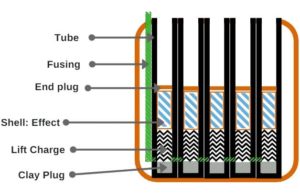
Different Types of Cakes:
Traditional Cake: A traditional cake will fire all shots straight up into the air, one at a time. See our classic item Kenna’s Choice below for an example of a traditional cake.

Fan Cake: A fan cake fires shots in a “fan” shaped angle. If the shots go back and fourth across the cake, it’s also called a sprinkler. See our top selling fan cake (also a sprinkler), Impressive as an example.
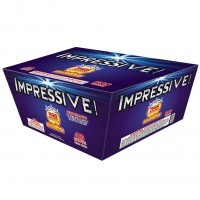
Finale Cake: A finale cake fires off shots in a rapid succession for a “Grand Finale”. Check out Evolution of Fire below, for a great example of a finale cake.
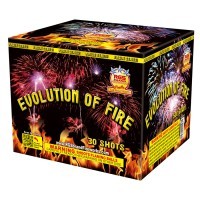
Zipper Cake: A zipper cake is similar to a sprinkler cake in that it fires shots back and fourth. However, a zipper will do this very rapidly. Most zipper cakes use comets instead of breaks. See Flying in Formation below for example, our best selling zipper cake!
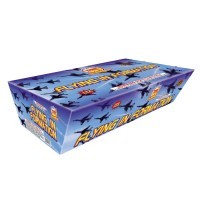
2″ Cakes: A 2″ cake uses all 2″ shots. These are larger than the traditional sizes (1″-1.5″), and because there is a 500gram limit in consumer cakes, you generally only see a maximum of 12 shots on a 2″ cake. 2″ shots have very large and impressive breaks! Check out our favorite 2″ cake, America Strong!
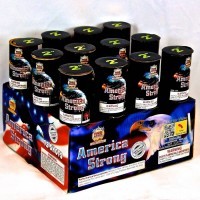
3″ Cakes: A 3″ cake uses all 3″ shots, also referred to as a 3″ rack by many. This is the biggest size that you can get in consumer fireworks! Much like the 2″ cakes, there is a limit to how many shots you will see on a 3″ cake. Because they are so massive in size, you’ll get 9 shots in one cake. See our long-time crowd favorite, Naggin Neighbors, below!
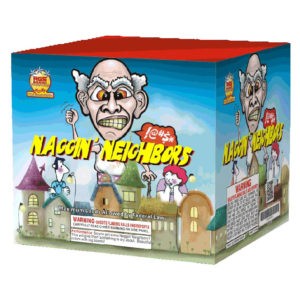
500’s vs 200’s:
Consumer firework laws dictate that you can only have up to 500-grams of powder in a cake. Most of the firework manufacturers divide their cakes into two levels, 500-grams and 200-grams. 200-grams are a much smaller scale of 500-gram cakes but can still pack a very impressive punch for their size. Sometimes 200-gram cakes are also referred to as multi-shot cakes. You can see many of the same effects in the 200-grams, the breaks will just be much smaller and not reach quite as high in the air. When doing a backyard show, many people will often choose to light a 200-gram and 500-gram at the same time to get a cool double layer effect in the sky. Below are some examples of our 200-gram cakes. You can tell by the pictures they are much smaller in size.
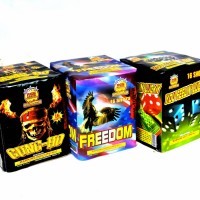
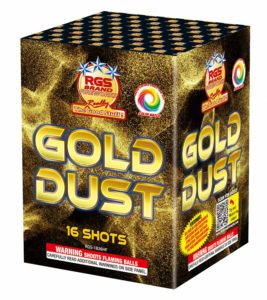
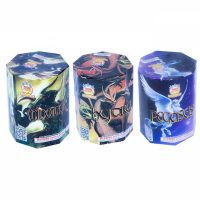
By knowing the different types of cakes, you’ll better understand what should be fired when during your backyard show this 4th of July! For example, you wouldn’t want to light your finale cake at the beginning of your show, it should be at the end! If you’ve been following our blog, you’ve now learned the different types of effects you see as well. By spending some time on our website, you can see which items you like the best and can start building your own backyard show! When you put together a show, you never want to see the same effects twice in a row. You’ll want to start small, maybe with some 200-grams, and build into bigger breaks and effects like 3″ cakes before heading into your finale. We’ll talk later on how to put together shows, and next week we’ll be learning all about artillery shells!




